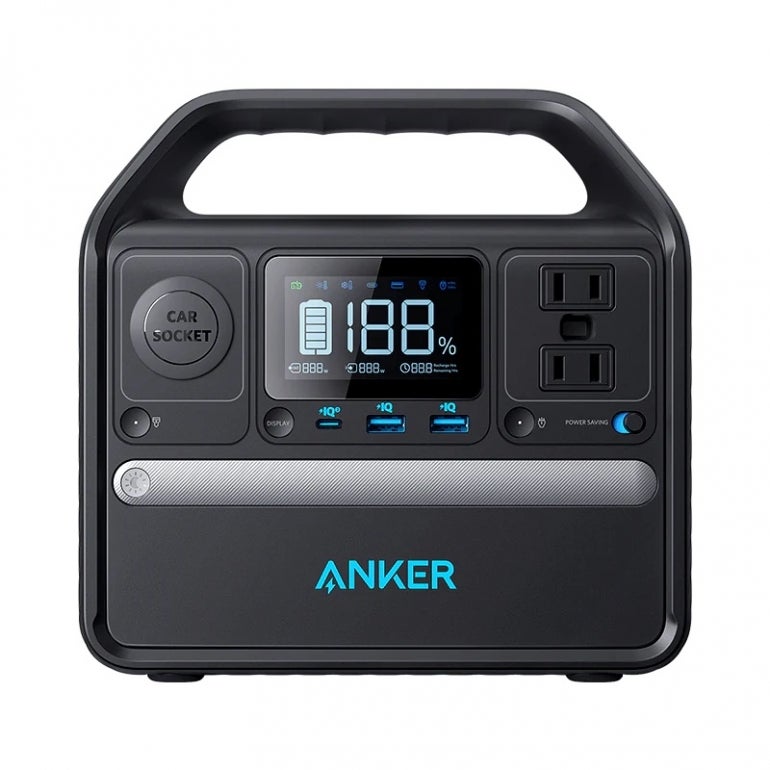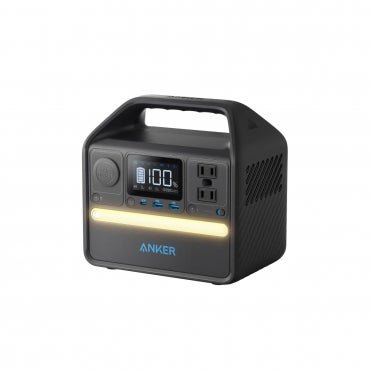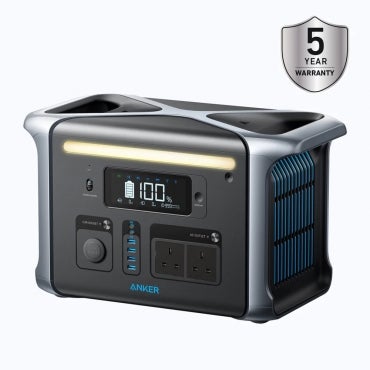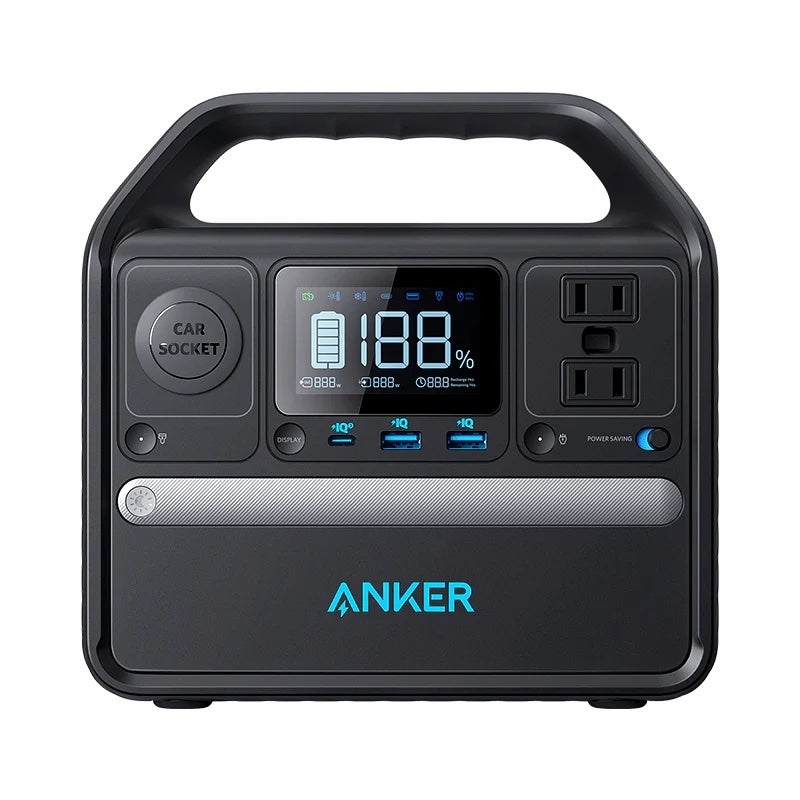
Portable power stations are becoming increasingly valuable pieces of equipment. This is especially true in an era where hybrid work might mean anything from working from home to working out of an RV or van far from conventional power sources.
These power stations usually combine several useful components into one physical unit, typically including:
- A battery that is usually based on Lithium technology: These might be older LiIon technology which starts to lose capacity (generally 20% loss after around 500 charge cycles) or newer Lithium Iron Phosphate (typically abbreviated LFP or LiFePO) that maintains capacity through 3,000 charge cycles.
- An AC inverter: These allow you to connect typical household devices that you’d generally plug into the wall to the unit.
- A set of DC plugs: At a minimum, this should include several standard USB outlets for charging things like smartphones. Better units might have USB-C outlets for newer laptops and smartphones or even 12V sockets that can power devices ranging from air compressors to portable refrigerators.
- A Battery Management System: These can handle the nuances of recharging a device from a variety of sources, ranging from a typical wall outlet to a car plug or solar panel.
SEE: 250+ tips for telecommuting and managing remote workers (TechRepublic Premium)
Why should you consider getting a power station?
Whether you’re telecommuting from home, exploring van life or planning a mini “workcation” in a campground, reliable and portable power for your laptop, smartphone, lights and other essentials is an obvious benefit. Questionable power sources while traveling or a mess of adapters and the risk of a dead battery in your vehicle make a power station a compelling option.
Power stations are also great for power outages. They can provide power for phones and radios to keep abreast of a storm or other emergencies. They can also power work-related devices and provide comfort and entertainment in an otherwise uncertain situation.
How to size your power station
Perhaps the most confusing element of selecting the right power station is picking the appropriate size, as prices vary significantly. Two numbers are important for remote workers: capacity and AC output.
Capacity
Think of capacity as the number of gallons of fuel in an automobile. Rather than a fluid measurement, power stations measure their capacity in watt-hours, typically abbreviated WH or Whr. Just as your car uses more gas if you put the “pedal to the metal” versus a lighter touch, so too will your power station use its “fuel” more quickly if you have several power-hungry devices connected.
Typically, anything with a motor or that generates heat will use more power than another device. For example, a hair dryer or microwave oven might drain your power station in minutes, while a refrigerator will last for hours.
For remote workers interested in powering a laptop or other electronic devices, you can get an approximate idea of how much power you’ll need by looking at your device specifications.

For example, my 14″ MacBook Pro has a 70Whr battery, according to iFixIt. Anker’s smallest power station, the PowerHouse 521, has a capacity of 256Whr, so it could charge my MacBook about 3.6 times (256Whr capacity / 70Whr battery = 3.6 full charges). Assuming I’d need to charge my smartphone and perhaps another device or two, I could plan on about three work days “off the grid” since a full charge of my laptop will generally get me through a workday.
AC Output
The AC Output represents how much power the power station can supply at once. A typical microwave might consume about 800W, exceeding the 200W AC Output of the Anker PowerHouse 521 and requiring something like the Anker PowerHouse 757.

Other considerations when shopping for a power station
Another consideration is ensuring your power station has an appropriate number of outputs for your expected use. Like most power stations, the Anker PowerHouse series provides more power outputs in their higher capacity units. Each power station provides a set of USB-A outlets (the typical rectangular USB plug) and one or two USB-C outlets.
Plugging your devices into the appropriate USB outlet rather than using an AC plug and adapter will optimize your power usage since it avoids converting energy from the power station battery from DC to AC back to DC to charge your device.
The weight and size of the device are also important considerations depending on your use case. Larger capacities equal larger size and weight, which should be balanced with your needs.
Finally, check the recharging time for the power station you’re considering. As electricity grids become overburdened, rolling blackouts are becoming an increasing occurrence. A power station that can quickly recharge might mean the difference between a full battery and a partial charge during the precious minutes you have power before the next blackout.
Include Anker power stations on your shortlist of options
Anker’s PowerHouse 521, 535, and 757 power stations offer a nice range of capacities and features, particularly for remote workers focused on charging laptops, smartphones and similar devices. A variety of capacities and a warranty, ranging from two years on the PowerHouse 521 and 535 to five years on the 757, complement devices already made by a company with a long reputation for power-related products that should be on your shortlist.
